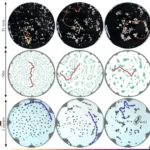In pursuing environmentally conscious and sustainable practices, the construction industry is witnessing a paradigm shift with the start of green building materials. These innovative materials are designed to meet construction projects’ functional and aesthetic requirements, minimize environmental impact, and promote long-term sustainability.
As the demand for eco-friendly construction practices continues to grow, green building materials are emerging as key players in shaping the future of architecture and infrastructure.
One of the primary goals of green building materials is to reduce the environmental footprint associated with construction. Traditional construction materials like concrete and steel often entail significant energy consumption and carbon emissions during production. In contrast, green building materials focus on renewable resources, recycled content, and low-impact manufacturing processes to minimize their environmental impact.
Wood, sourced from responsibly controlled forests, is a classic green building material. Timber possesses excellent structural properties, is renewable, and sequesters carbon throughout its lifespan. Additionally, engineered wood products, such as laminated veneer lumber and cross-laminated timber, provide sustainable alternatives to traditional building materials while maintaining structural integrity.
Recycled materials play a crucial role in green construction, diverting waste from landfills and reducing the need for virgin resources. Recycled steel, for instance, is derived from scrap steel and maintains the same strength and durability as its non-recycled counterpart. Recycled glass, incorporated into concrete or used as decorative elements, adds aesthetic appeal and environmental benefit to construction projects.
Innovative technological advancements have given rise to novel green building materials with enhanced sustainability features. Photovoltaic glass, for example, integrates solar cells into building facades or windows, turning them into energy-generating surfaces. Self-healing concrete, embedded with bacteria that produce limestone to fill cracks, extends the lifespan of structures and reduces the need for maintenance.
Beyond environmental considerations, green building materials improve energy efficiency and occupant health. Insulation materials made from recycled content or natural fibers enhance energy efficiency by minimizing heat transfer. Low-emission paints and finishes reduce indoor air pollution, creating healthier living and working environments.
Certification systems, such as LEED (Leadership in Energy and Environmental Design), guide the selection and use of green building materials in construction projects. These systems evaluate various aspects, including material sourcing, energy efficiency, and indoor air quality, to ensure that buildings adhere to stringent environmental standards.
Despite the promising strides in adopting green building materials, challenges persist. Cost considerations, limited availability of certain materials, and resistance to change within the construction industry pose obstacles to widespread implementation. However, as awareness grows and sustainability becomes a central tenet of architectural and construction practices, the economic viability of green building materials is improving.
The Techgolly market research team estimates that the global green building materials market size was valued at least USD 400 billion in 2023 and is projected to reach up to USD 884 billion by 2030. The growth will continue at a compound annual growth rate (CAGR) of 10% to 12% from 2023 to 2030.
Conclusion
Green building materials represent a pivotal shift towards sustainable and environmentally conscious construction practices. Their integration into building projects addresses environmental concerns and aligns with the broader objective of creating resilient, energy-efficient, healthier built environments. As the construction industry continues to embrace green practices, the influence of these innovative materials will play a defining role in shaping a greener and more sustainable future.





